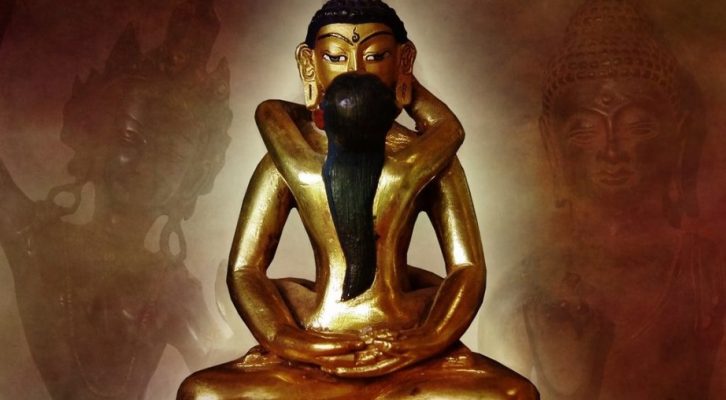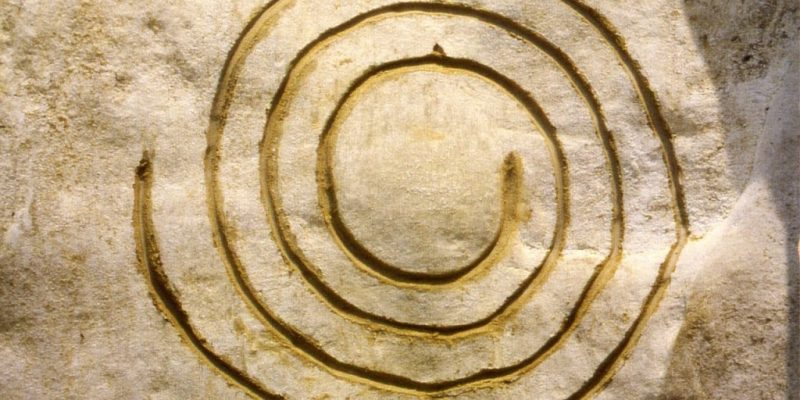
Sound — and in a more technical sense vibration and movement — has always played an important role in many legends, tales and thoughts that narrate the creation of the Universe and Life.
In a general sense, across ancient civilizations and cultures, it was thought that the world didn’t always exist, or at least was in some state of “silence, stillness, and darkness.” Then — suddenly and without apparent reason — movement, sound, and light appear, marking the emergence of the phenomenal Universe.

For instance, in the Gospel of John (one of the four canonical gospels from the Christian New Testament) the first two sentences of the Gospel state: “In the beginning was speech, and speech was to God, and speech was God. This was in the beginning with God.”
Mind that these two first sentences have been interpreted widely differently through the centuries, but the above is a literal translation from the original Greek text: Ἐν ἀρχῇ ἦν ὁ λόγος, καὶ ὁ λόγος ἦν πρὸς τὸν θεόν, καὶ θεὸς ἦν ὁ λόγος. οὗτος ἦν ἐν ἀρχῇ πρὸς τὸν θεόν.
Psalm 33:6, taken from the Holy Bible, the Old Testament, states: “By the Word of the Lord the heavens were made, and by the Breath of His mouth all their lights.” The original Hebrew text hereof is: בדבר יהוה שמים נעשו וברוח פיו כל צבאם׃
Another well-known example is the Indian Hindu Mantra Om (Aum) that originates from the sacred texts of the Vedas. The sound Aum (Om, Ohm) is considered the first and most sacred sound, representing the creation of the Universe as an emanation of the first “Breath” of God or Brahman (this first breath is thought to sound like the word Aum).
In the Japanese creation myth (called Tenchi-kaibyaku or the Creation of Heaven and Earth) movement and sounds indicate the beginning of the world. As the myth starts out: “At the beginning the universe was immersed in a beaten and shapeless kind of matter (chaos), sunk in silence. Later there were sounds indicating the movement of particles.”
But even contemporary science through its Big Bang Theory in a certain way attributes the creation of the world (the Universe) to sound, or at least to a sudden expansion or sudden explosion from “no-thing” to “everything,” which implies sound, vibration, and movement.
Of course, “breath” and “sound” have also been closely linked in tales about the beginning of the Universe. For instance, the aforementioned text of Psalm 33:6 “By the Word of the Lord the heavens were made, and by the Breath of His mouth all their lights” already suggests this idea.

In fact, breath and breathing naturally imply the creation of sound. It means inhaling and exhaling (of air i.e. life force energy) which means vibration, movement, and sound. In the allegories about the creation of the world it’s often thought that the world came into existence through the Breath of God, that is, through God’s exhale.
This “exhale” would correspond with the Big Bang Theory. Interesting enough there are also scientific theories of cyclic universes that hypothesize that a kind of “inhale” will occur after the universe’s maximum expansion resulting in the Big Crunch (a contraction and implosion of the universe).
In addition to the above, you have the Big Bounce Theory that proposes that the Universe could collapse to the state where it began (the Big Crunch Theory) and then initiates another Big Bang, and so on. It’s perhaps superfluous to say that this quite resembles the continual “exhale and inhale of God’s Breath.”
The idea of “cyclic universes” is not new though. It’s a cosmological concept already found in Hinduism, Jainism, Sikhism, and Buddhism, all of which regard time as cyclical and consisting of repeating ages, called The Wheel of Time or Wheel of History (Kalachakra).















